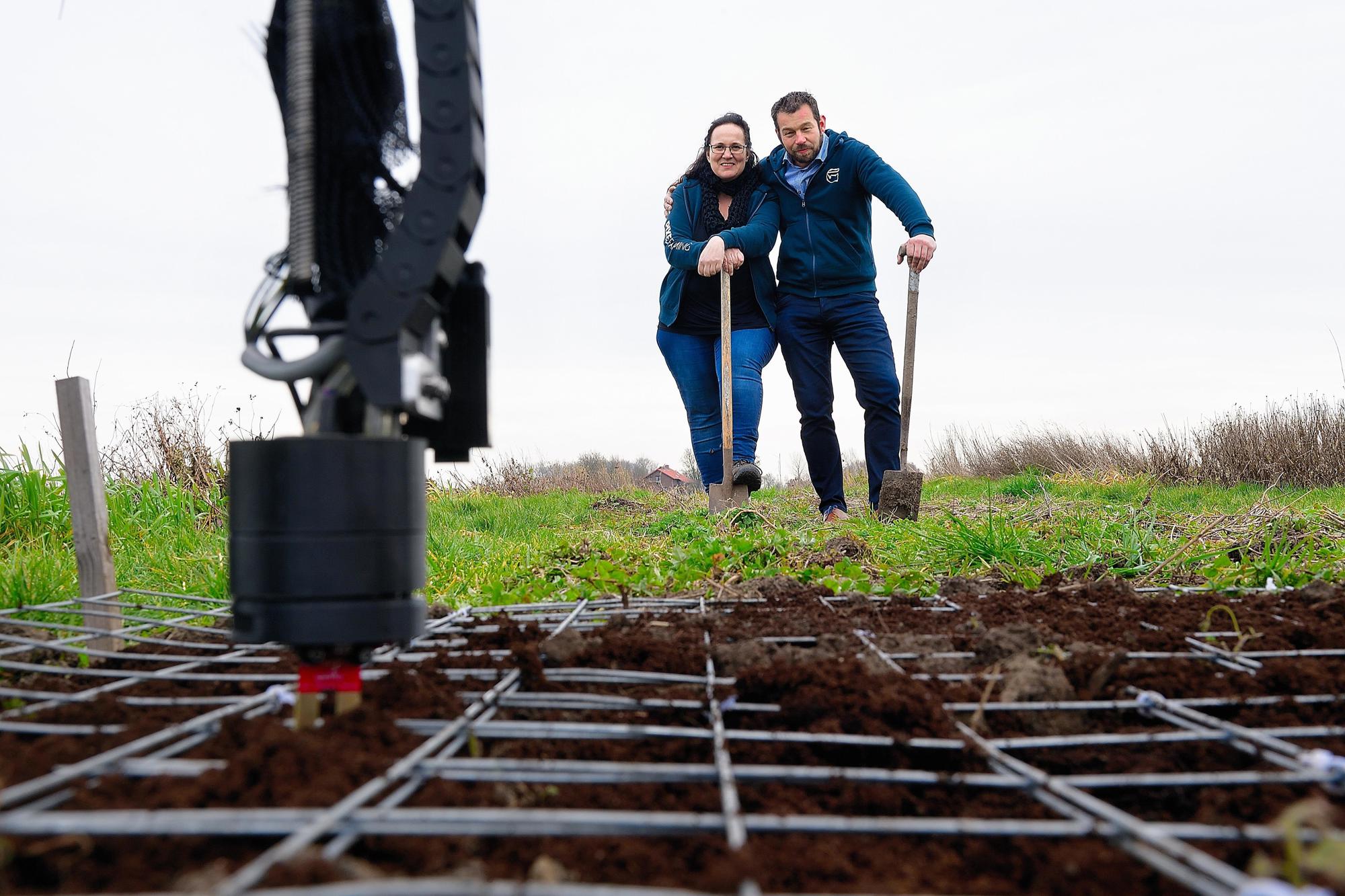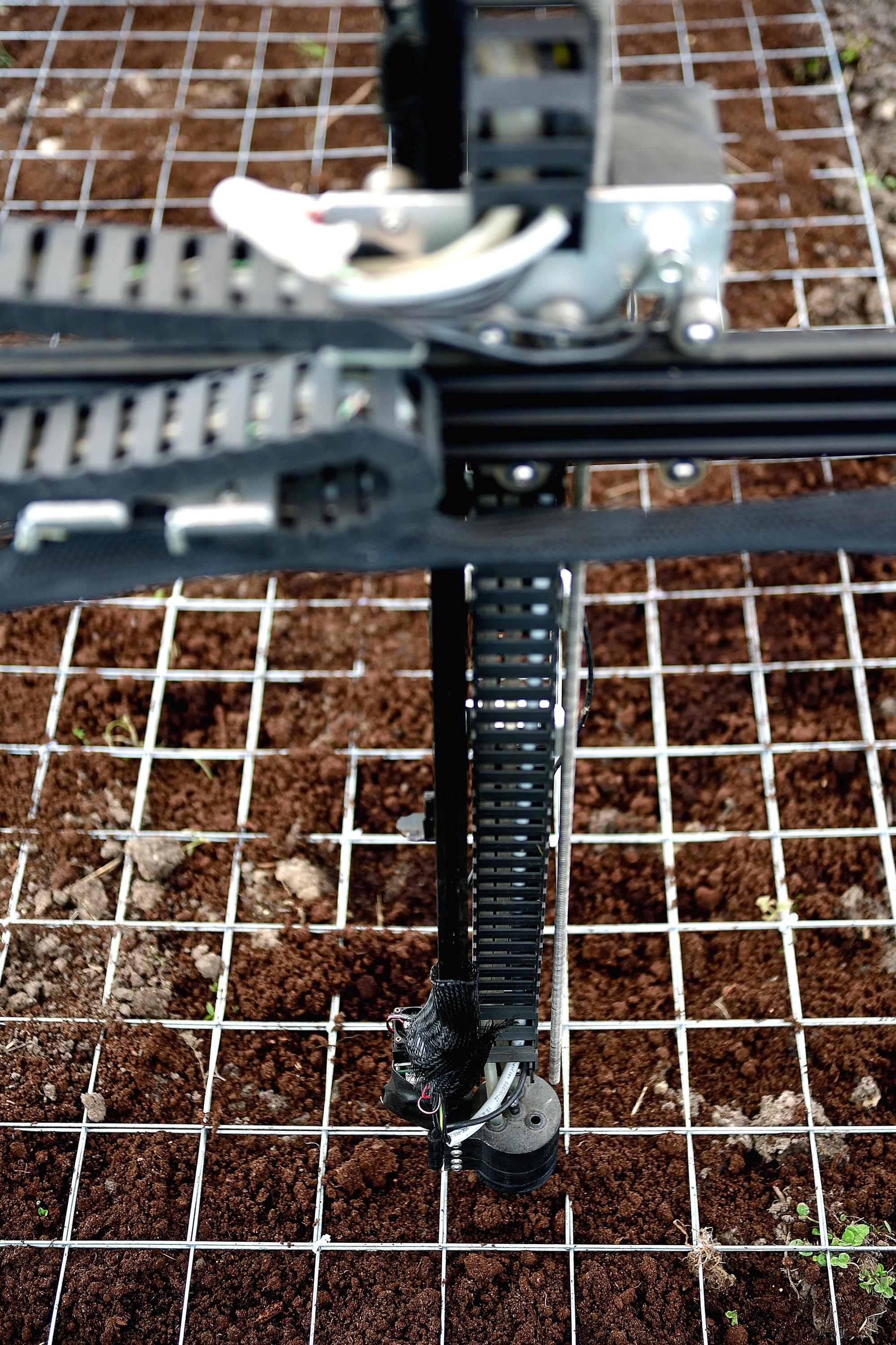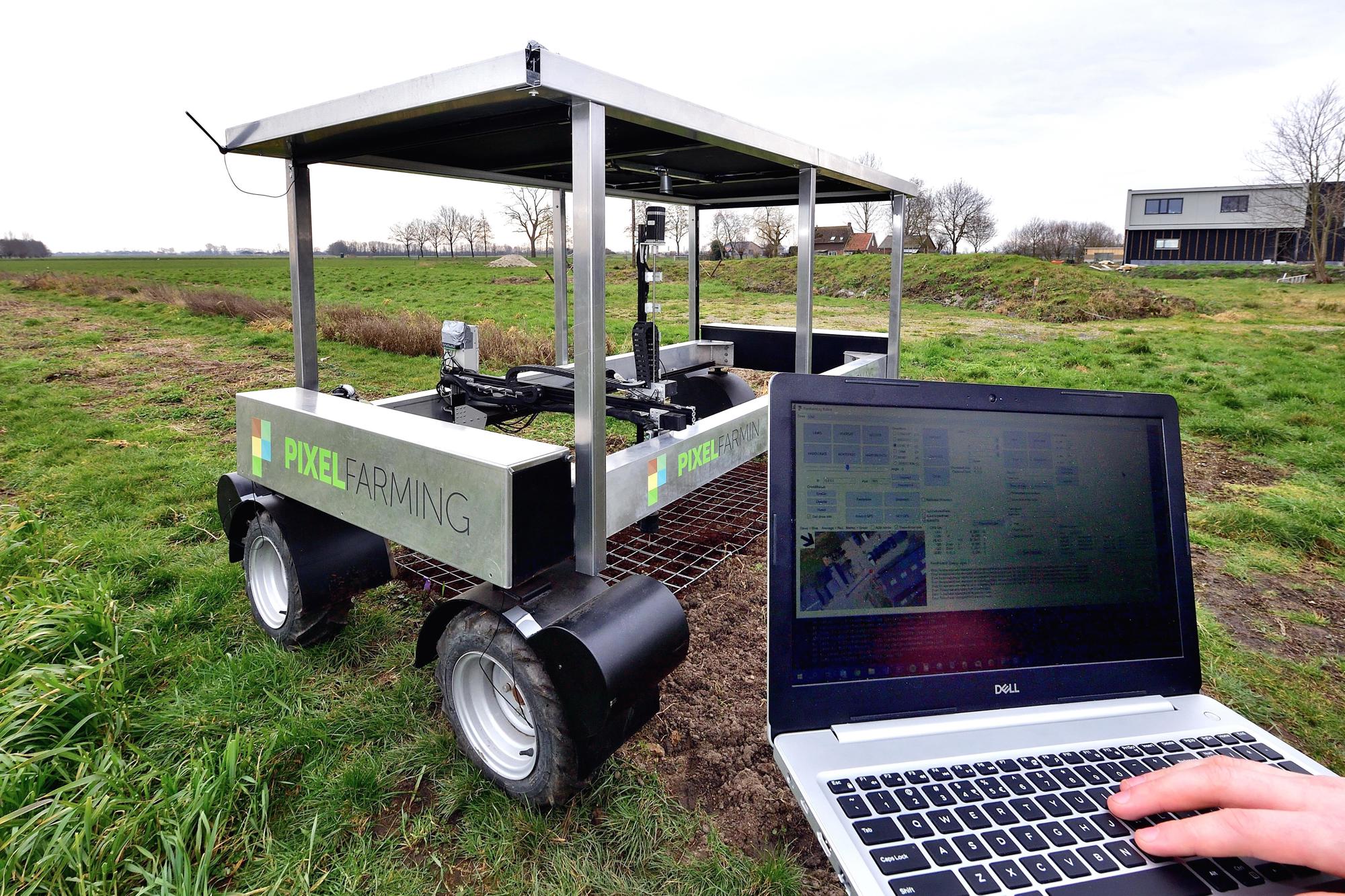Just imagine that you could grow your own organic food with an agricultural robot. Pixelfarming, a company set up by entrepreneurs Arend and Simone Koekkoek, has taken this idea and put it into practice.
An app lets you watch how your potatoes grow and how the robot plants onion bulbs. Arend and Simone Koekkoek believe that this is how demand-driven agriculture will look in the future. Their company, Pixelfarming, is set to transform small-scale organic vegetable farming.
Let us go back to 2014: Arend and Simone Koekkoek were holidaying at a campsite in France with their friends Karin Timmerman and Kees Westein. After a few days of small talk, they were now ready to discuss the more important things in life. As they sipped a good glass of wine, they turned their attention to a thought-provoking question: What would you do with a million euros?
Simone remembers exactly what her answer was: use our talents to leave the world better than we found it. Wouldn’t it be incredibly cool if they could grow their own food, generate their own power and be self-sufficient in other areas?
On the evening itself, Simone thought that this was just another wild idea that you typically come up with on holiday. But, to her surprise, Arend talked about her idea again as they travelled on. “Let’s just do it,” Arend said. “There’s no reason not to. As long as we don't find anything that stops us dead in our tracks we will carry on.”
You have to dream. In 2016, they teamed up with Karin and Kees and bought a dilapidated old farm with 10 hectares of land on the outskirts of Almkerk. The couples built two new ecological homes for their own families, told the utility company that they no longer needed gas and started to pioneer sustainable technology. Their aim: to be completely self-sufficient and set up an innovation centre for sustainable agriculture. “Like one of those TV programmes about migrating families, but in this case we moved locally to ‘The land of Altena’”, says Simone.
The former farm shed was converted into Campus Almkerk with workshops, labs and experimental gardens. It is now occupied by several different companies that share expertise and jointly devise innovative and sustainable agricultural and energy concepts.
They needed nine hectares of land to feed all the people on the campus and their families. When you factor in the operational buildings, their plot was exactly the right size. This calculation led directly to their breakthrough idea for the agricultural sector: pixel farming. Digital vegetable gardening, but with real potatoes, onions, herbs and other crops, in collaboration with Mother Nature.
Simone comes from the construction world and Arend started his career as a software and data specialist. Based on their technical knowledge and business experience, they see infinite possibilities for growing food in a different way. Rather than thinking in terms of existing farming practices, their concepts focus on big data, autonomous self-driving robots and rapidly changing consumer needs. From that perspective, they see the natural landscape as a digital canvas that can be divided up into pixels. “Just like the Hay Day app, which many people play on their smartphones,” says Simone. “Swiping the screen to water your own carrots, but in real life this time.”
Pixel farming is the result of this marriage of concepts and techniques. Their website, ‘pachtjepixel.nl’, allows consumers to reserve their very own ‘pixel’ of agricultural land and create an agricultural plan to suit their needs.
All the hard work - sowing, planting and taking care of your ‘pixel field’- is done by a tireless robot. Sensors are used to tell this robot how much water or fertiliser is needed for each individual plant. As a result, less water is wasted, no chemicals are needed and the soil is healthier. Consumers can also tap into camera feeds to see exactly how their crops are growing. In interface jargon: it is a ‘wysiwyg’ (what you see is what you get) experience.
The outside world praised Simone and Arend’s entrepreneurial drive, but also looked questioningly and perhaps defensively at their plans. Were the dimensions of the new homes in line with the zoning plan? Would they really be able to earn an adequate income? And, of course: what on earth were all those technicians doing on a farm of all places?
In the eyes of Arend and Simone, there is no logical reason why big data specialists, software developers and other engineers should not put their knowledge and talents to good use in rural Brabant. “We live in a knowledge economy today, not the production economy of the past”, says Arend. “We want to move away from the idea that mass production is the only way farmers can make money”, Simone adds. “We want people to get back in touch with the products they use in their food.”
Step two is a hyper-individual consumer-oriented approach, which Arend first encountered in his previous work on computer automation projects for the printing industry. Printing works had become accustomed to buying an even larger rotary press each time they renewed their machinery in order to keep up with market developments. This is very much how farms operate: big, bigger, biggest. However, those same printing companies have now successfully made the transition to personalised printing. Shifting away from upscaling as the ultimate business model to ‘every home has its own printer’.
The idea that they are now refining at the campus involves a similar transition in the area of food. Arend: “Techniques that were previously used to build software for personalised birthday cards are now being used to generate individual cultivation plans for 50 consumers in Brabant.”
The third step involves cleverly combining technologies, which often already exist. The agricultural robot is not new, however it stood idle for 99% of the time. With the help of Wageningen University, they have adapted the robot so that it can now drive to all the vegetable gardens using GPS. The next development will be a cuddly electric car that automatically delivers the fresh harvest to every customer's home without emitting any CO2.
They also want to be able to supply all the vegetables and herbs that are required by a restaurant. They are collaborating with other innovators to investigate local production methods for supplying everything required for 500 meals. Arend, who enjoys eating meat, believes that livestock can also be added to the company’s agricultural activities in the future. “Restaurants need meat and dairy products as well, so that would be a good addition.”

Simone and Arend Koekkoek see all their activities as work in progress. That includes finding and refining a good earnings model. At the moment, they mainly earn their income by selling knowledge. “We generate a nine times higher return by selling knowledge rather than crops”, says Arend.
Their philosophy: keep the challenges manageable to avoid being overwhelmed. “We prefer to set a large task force of engineers to work on relatively minor problems”, says Simone. “We assess the value of our ideas by talking about them with major players, such as market leaders in the food industry and also nature organisations. That feedback helps us home in quickly on solutions that we can then roll out on a larger scale.”
Now that they are entering their second season, they are investigating ways of scaling up Pixelfarming. A further two farms are needed to satisfy growing demand from several restaurants that buy their produce. Preferably somewhere in the region, so that they can continue to produce locally. “The great thing about this form of sustainable agriculture is that it is also suitable for vacant land in cities”, says Arend. “You can use it to bring small, abandoned muddy plots back to life again.”
The number of partnerships continues to grow: project developers are getting involved and even farming study groups have signed up. They are happy with their location in North Brabant. “There is a lot of food expertise in Brabant, many interesting market parties are based here and people like to roll up their sleeves and get stuck in”, says Arend. “I see real commitment wherever I look. Clearly we are highly motivated to make a success of the business, but the support we receive from those around us should not be underestimated. We continuously meet people who appreciate innovation and are willing to give us the benefit of the doubt.”
Simone and Arend want to promote their nature-inclusive form of agriculture as a new best practice, which contributes to the circular economy. Last season, they tested the robot on a 2500 m2 trial field. Exactly how productive their kitchen garden approach would be without using chemicals was a major concern. In the extremely dry summer of 2018, the weeds actually kept the soil moist and the onions grew better than expected. “What a great result”, says Simone. “Let’s work with nature rather than hysterically trying to kill every weed in sight.”
In their experience, nature and technology are strong allies. The Old World Swallowtail, one of the largest butterflies in the Netherlands, has now made its way to their digitally managed farm. The flowers around their pixel gardens also attract other interesting insects. “Even though our broad beans were attacked by lice, our population of ladybirds was large enough to devour them all”, says Simone. “Nature saved the day. A perfect partnership between man and talented resources provided by nature.”


A few years after those first inspiring ideas at the French campsite, Simone and Arend have founded Pixelfarming and are now living their dream in rural Brabant. While things have not been easy, the journey so far has been worthwhile. “If you choose to live like this, you need to be able to cope with uncertainty”, says Arend. “We have set things in motion. We have left A and are somewhere on the road to B. Sometimes, your journey is very rewarding and you enjoy all the benefits. But you also have to accept that you have no idea what the future holds. We have beautiful views here, but also have to put up with the mosquitoes.”
Arend grew up in a resourceful family that was ready to try its hand at anything, so he knows all about self-sufficiency. For Simone, on the other hand, rural life is completely new. She had never planted a carrot or radish in her life.
Last season, she had her first experience of weeding and hoeing because the robot is not capable of these tasks yet. She enjoyed working with nature and the digital vegetable gardener more than she expected. “I saw partridges in the grass, heard bees buzzing and felt completely at home. When I dig my hands into the soil or gently run my fingertips through the grain, I feel more in touch with my surroundings than ever before.”
You can copy the full text of this story for free at the touch of a button